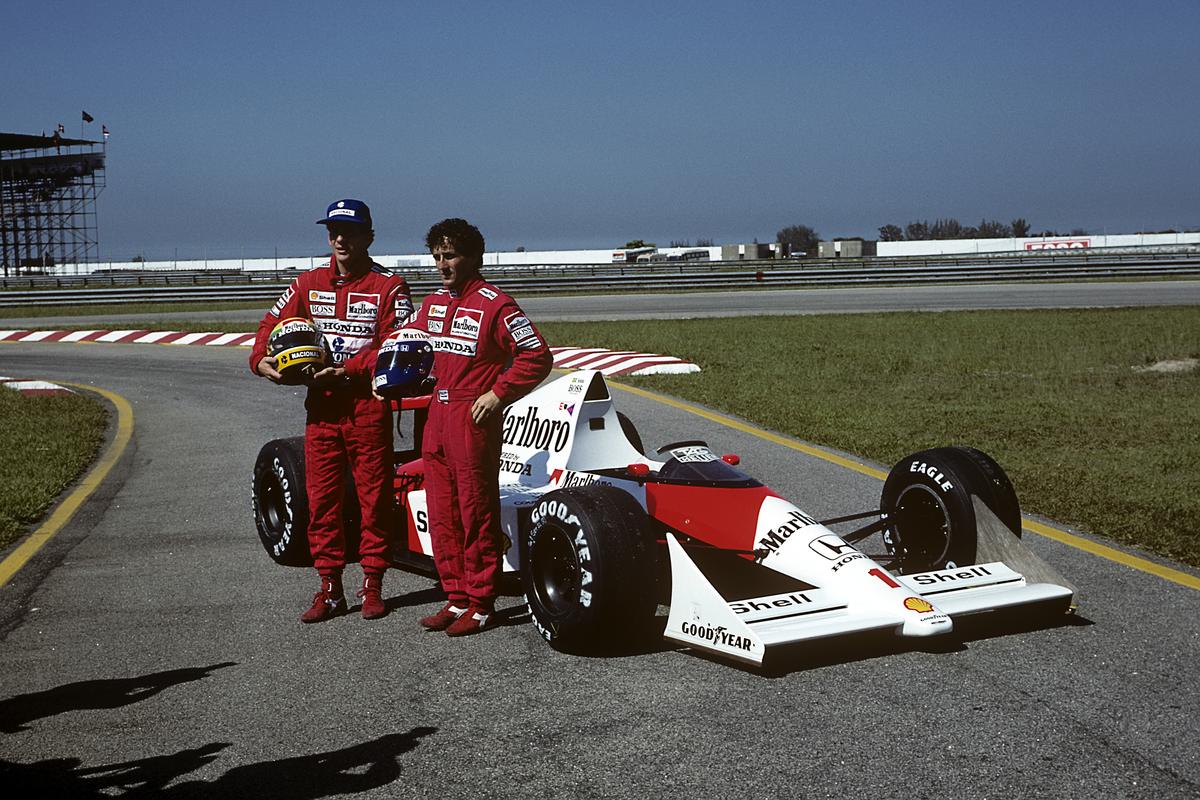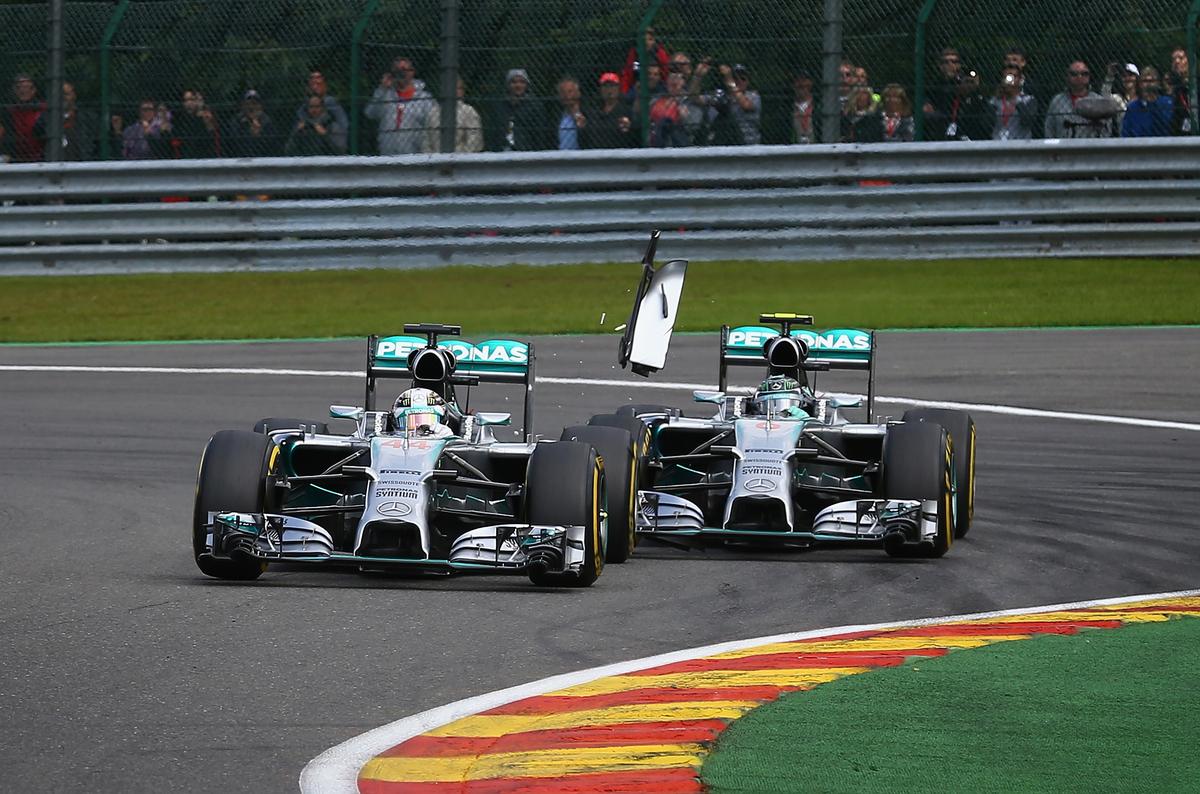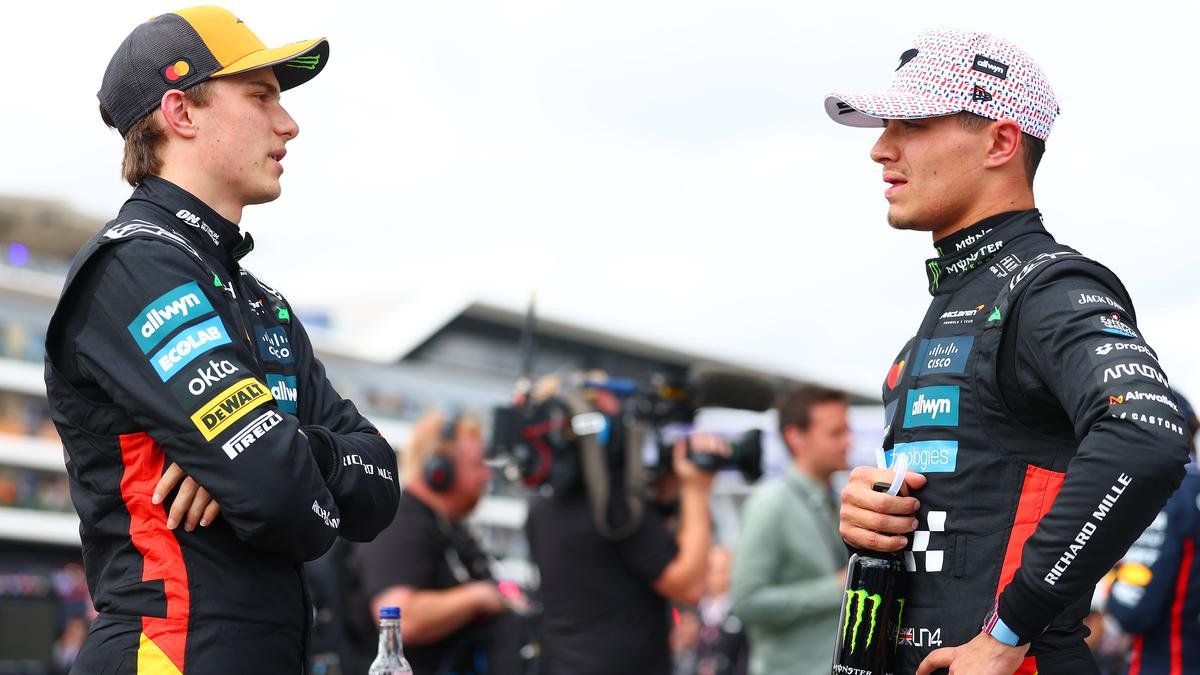There are team sports, individual sports, and then there is motorsport, where the lines between the two blend and blur.
One intriguing aspect of the top single-seater racing series, such as Formula One and MotoGP, is that they are inherently a team sport, as hundreds of people work together to create the fastest machine.
Startling metamorphosis
But once the vehicle is on track, the sport metamorphoses into something entirely different — a primal battle between individuals. For a driver or rider, the first competitor they want to beat is their teammate, sitting on the other side of the garage, driving identical machinery.
Some of the most iconic duels in F1 have been between teammates for supremacy.
At the halfway stage of the 2025 season, the stage is set for another such epic clash, with McLaren’s Oscar Piastri and Lando Norris separated by just eight points. Third-placed Max Verstappen, the reigning four-time champion, is 69 points behind and, barring a miraculous turnaround in Red Bull’s fortune, unlikely to figure in the fight.
The dynamic in an intra-team battle is one of the most interesting aspects of the world championship. The F1 championship consists of two parts: the drivers’ crown and the constructors’ title. Although car performance accounts for almost 90% in determining who will win the title, the beating heart of the sport is still the individual driving the car.
ALSO READ | Red Bull fires longtime F1 team principal Christian Horner after 20-year stint
It means that the drivers’ title is more prestigious and enduring in memory. The 2021 and 2024 seasons, for instance, are more notable for Verstappen’s laurels than for Mercedes or McLaren being the title-winning squads.
However, for the team, the constructors’ standing is crucial, as it determines the prize money, which runs into hundreds of millions of dollars, and staff bonuses.
In a situation where a team and its two drivers are in the title picture, the management needs to strike a balance by keeping the larger goal in mind: winning the constructors’ championship, while also ensuring the drivers are satisfied.
History has shown, however, that this is a challenging task to manage because drivers, once they realise that the big prize is up for grabs, will go to any lengths to gain a competitive advantage over their rivals, especially their teammates.

The war within: Ayrton Senna and Alain Prost’s careers were defined by their intense rivalry, which played out over their time at McLaren in 1988 and 1989.
| Photo Credit:
Getty Images
F1 is replete with tales of teammates getting along well until the moment they get a car capable of fighting for the title, and the relationship quickly goes sour. Once two drivers are fighting at the sharp end, the physical proximity in a close fight will inevitably boil over.
In recent times, Lewis Hamilton and Nico Rosberg’s rivalry at Mercedes showed how swiftly things can get out of the management’s hands. The only contenders for the crown from 2014 to 2016, the two — friends during their karting days — became sworn enemies.
ALSO READ | Madrid’s new street circuit to debut in 2026, replacing Imola on F1 schedule
They had a few run-ins in 2014 and 2015 when each tried to get the upper hand. But the most significant incident occurred in 2016 when Hamilton attempted to pass Rosberg on the opening lap of the Spanish GP and took both of them out. The team bosses had to stage an intervention and get them to apologise to the factory for their petulance.
Toxic atmosphere
The two sides of the garage also became guarded about data, hoping to have an advantage over the other. So much so, the team rejigged the mechanics of both cars ahead of the 2016 season, as the team atmosphere had become toxic.
It is something Hamilton also knows from his rookie season in McLaren back in 2007, when he and Alonso were at loggerheads. Alonso’s infamous move, blocking Hamilton in the pits during the Hungarian GP qualifying to deny the latter a chance to set a time, showed how serious the issue was. In the end, Ferrari’s Kimi Raikkonen nicked the title from the duo, who were tied on points, by just one point.
Things can also get heated off the track, leading to political machinations behind the scenes. How a driver feels the management is treating them can make or break their career. The paranoia over a teammate’s equipment and set-up can consume a driver.
Sebastian Vettel was convinced something was wrong with his car in 2010, after being beaten by Mark Webber in two races in Spain and Monaco. In Webber’s memoir, he reveals that then team boss Christian Horner told Vettel his chassis was cracked because the German couldn’t accept he was beaten fair and square.
While this is one such example, F1’s greatest teammate tango had everything that could go wrong when two strong drivers go head-to-head. Ayrton Senna and Alain Prost’s careers were defined by their intense rivalry, which played out over their time at McLaren in 1988 and 1989.
ALSO READ | Coulthard hails Piastri, backs him to clinch drivers’ crown this year
The ever-daring Senna wanted not just to win but to demolish his opponent, giving no inch to anyone. In contrast, Prost was the clinical ‘Professor’, who looked to win the race without straining the machinery. It started with Senna forcing Prost towards the pit-wall in Portugal in 1988, but came to the fore when the two collided in a title-decider the following year in Suzuka. Although Senna won, he was disqualified for cutting a chicane, which gave Prost the title.
While Senna was the upstart in McLaren, Prost, already a two-time champion with the team, believed that it was gravitating towards the Brazilian and felt engine supplier Honda also preferred his arch-rival, giving him special engines. In turn, Senna believed FISA president Jean-Marie Balestre sided with his fellow Frenchman and cost him the title in ’89. The relationship deteriorated to the point that Prost eventually left to drive for Ferrari in 1990.

No moves barred: Friends during their karting days, Lewis Hamilton and Nico Rosberg became sworn enemies at Mercedes. The action on track often reflected this dynamic.
| Photo Credit:
Getty Images
So far in 2025, there hasn’t been the same animosity between the McLaren drivers, despite a few isolated incidents. More importantly, the management has adopted an approach that ensures they are fully prepared for a situation in which drivers come together and openly discuss it, having established procedures to deal with it.
The main flash point was in Canada when Norris rammed into Piastri on the final lap, but he immediately apologised. That, and the fact that Norris retired from the race without Piastri suffering any damage, meant the situation was defused easily.
Uneasy calm?
However, as we enter the second half of the championship, it remains to be seen how long the calm lasts. Last year, in Hungary, Norris had to be goaded into giving up the race lead, which he had inherited when the team’s strategy mix-up cost Piastri the advantage. In what was seen as payback, Piastri pipped Norris at the start in Monza, which took everyone, including the team, by surprise, despite Norris being the only one with a realistic chance of winning the title.
Those are the small sparks that could engulf a team in flames in a tight title fight. Can Norris and Piastri keep it clean, or will the competitive jostling boil over, as it always has in this sport?
